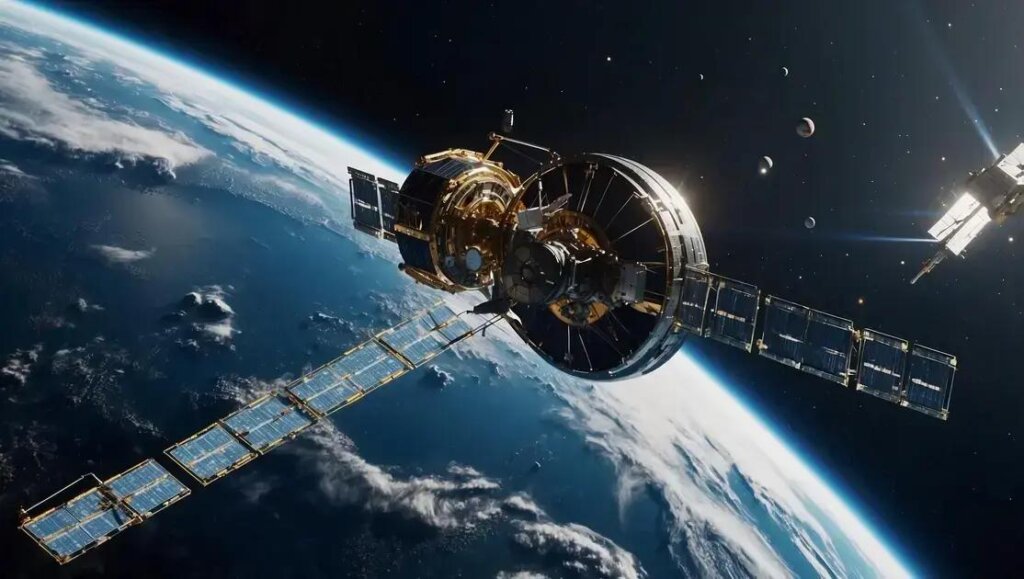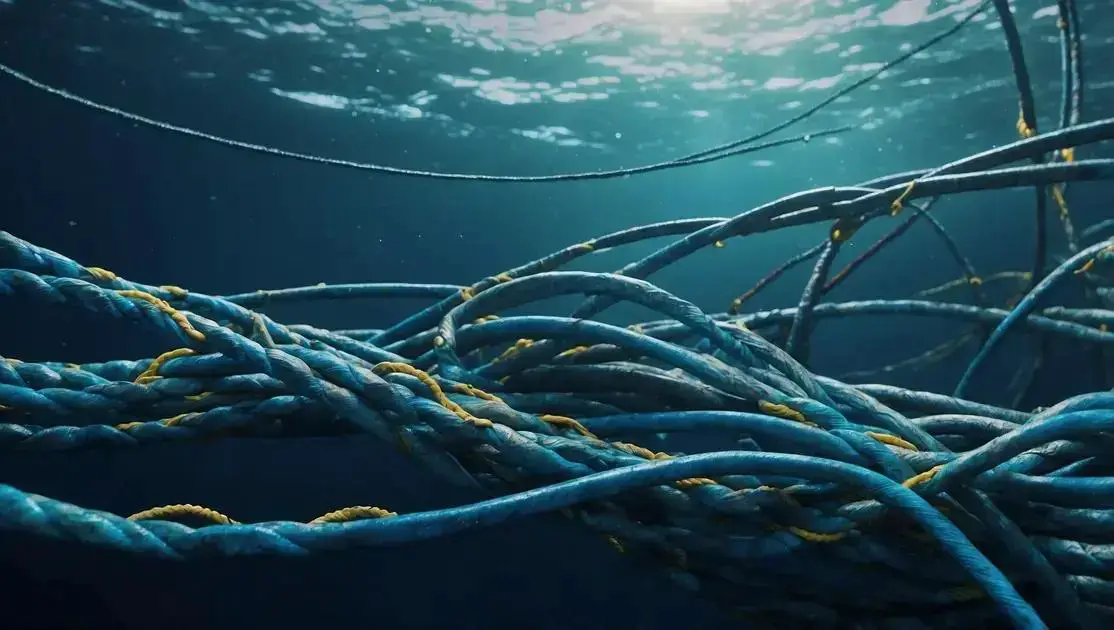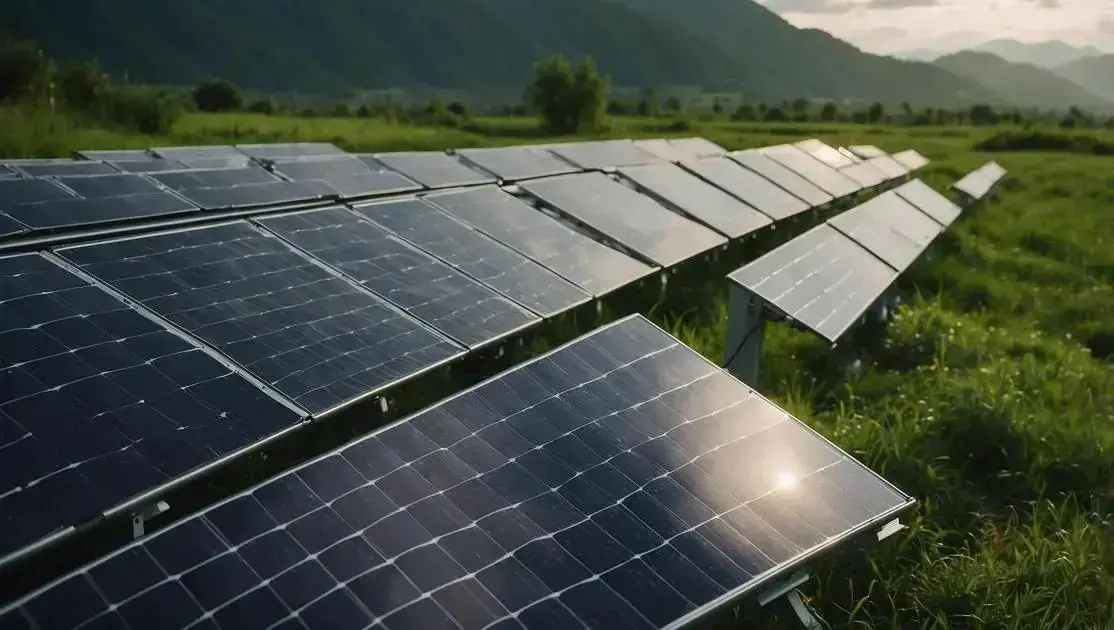Satellite Protection is essential in today’s technology-driven space environment. As more satellites are launched, it’s vital to safeguard these assets from various threats, including debris and cyberattacks. This article examines the best practices in Satellite Protection, the technologies involved, and policy frameworks that help in securing our space assets effectively.
Table of Contents
ToggleUnderstanding Satellite Protection
Understanding Satellite Protection is vital for maintaining the integrity of our satellites. As satellites orbit the Earth, they encounter various risks that can lead to their malfunction or destruction. These risks include solar radiation, space debris, and even cyber threats. Effective satellite protection mechanisms aim to safeguard these crucial assets.
Types of Satellite Protection Mechanisms
One primary method is shielding against solar radiation. This type of protection involves using specialized materials that can absorb or deflect harmful solar particles. By doing this, satellites can maintain their operational efficiency and avoid damage.
Monitoring and Early Warning Systems
Another essential aspect of satellite protection is having monitoring systems that can detect potential threats in real-time. Space weather forecasting technologies help predict solar events that could impact satellites. Early warnings allow operators to take necessary actions, such as repositioning satellites to safer orbits.
The Role of International Collaboration
Protecting satellites is not solely the responsibility of one country. International cooperation can enhance satellite safety. Countries and organizations share data about debris tracking, improving each nation’s ability to protect its satellites from unforeseen dangers.
Investment in Research and Development
Continuous research is necessary to improve existing satellite protection methods. Innovations in materials science and engineering are crucial for developing more effective shielding options. As technology advances, newer methods can be implemented to enhance satellite safety.
Conclusion
Understanding Satellite Protection requires comprehensive strategies that involve technology, monitoring, and collaboration. As more satellites are launched, implementing effective protective measures becomes increasingly important to ensure they remain operational and safe in the harsh realities of space.
Types of Satellite Threats
There are various types of satellite threats that can jeopardize the functionality and safety of satellites in orbit. Understanding these threats is key to implementing effective protection measures.
1. Solar Radiation
One of the most significant threats to satellites comes from solar radiation. High-energy particles emitted by the sun can disrupt satellite electronics and affect their operations. This is crucial for satellites dependent on sensitive instruments.
2. Space Debris
Another major concern is space debris. This includes defunct satellites, spent rocket stages, and fragments from past collisions. Even small pieces of debris can cause severe damage to operational satellites due to their high velocities.
3. Micrometeoroids
Micrometeoroids are tiny particles from space that can also pose risks. While less dangerous than larger debris, they can impact satellites at high speeds, causing various forms of damage to sensitive components.
4. Cybersecurity Threats
With increased connectivity, cybersecurity threats have emerged. Hackers can target satellite systems, potentially accessing data or taking control over operations. Protecting satellite networks from these attacks is essential.
5. Satellite Constellation Management
For satellite constellations, managing proximity between multiple satellites adds a unique challenge. If these satellites come too close, it risks collisions that could lead to destruction and the creation of even more debris.
6. Electromagnetic Interference
Satellites can also face threats from electromagnetic interference. This can come from other satellites, terrestrial sources, or intentional jamming, hindering signal clarity and data transmission.
7. Hostile Action
In extreme cases, satellites can be targeted for hostile actions, including anti-satellite weapons. This is a significant concern as geopolitical tensions rise globally, highlighting the need for effective defense strategies.
Understanding these types of satellite threats is critical for developing comprehensive protection strategies. By addressing these risks, the longevity and functionality of satellites in orbit can be better ensured.
Importance of Satellite Security
The importance of satellite security cannot be overstated in today’s increasingly connected world. As satellites become more vital for communication, navigation, and data collection, ensuring their security becomes essential for several reasons.
1. Protection of Critical Data
Satellites transmit vast amounts of sensitive information, including military communications, weather data, and financial transactions. Strong security measures prevent unauthorized access, ensuring the integrity and confidentiality of this data.
2. Maintaining Operational Integrity
Operational integrity is crucial for satellites that provide essential services, such as GPS and weather forecasting. Any breach can lead to the disruption of these services, impacting countless industries and individuals.
3. Mitigating Cyber Threats
Cybsersecurity threats are increasing, making satellite security more pressing than ever. Hackers can exploit vulnerabilities to gain control over satellites, leading to service interruptions or misuse of satellite capabilities. Implementing robust security measures is necessary to mitigate these risks.
4. Enhancing International Relations
As satellites often serve multiple nations, their security has geopolitical implications. Ensuring secure operations can promote trust between countries, reducing the risk of conflict over satellite operations and their data.
5. Compliance with Regulations
Many countries have laws and guidelines surrounding satellite security to protect national and global interests. Adhering to these regulations is crucial for satellite operators to avoid legal repercussions and maintain service continuity.
6. Prolonging the Life of Satellites
When satellites are well-protected, their lifespan can be extended, which is important for cost savings and efficiency. Investing in security measures today can prevent costly repairs or replacements in the future.
In conclusion, the importance of satellite security encompasses protecting critical data, ensuring operational integrity, and mitigating a range of threats. It is essential for stakeholders to prioritize these security measures in their satellite operations.
Technologies in Satellite Protection
Technologies in satellite protection play a crucial role in ensuring that satellites operate safely in the harsh environment of space. With numerous threats posed to these assets, several innovative technologies have been developed to address these challenges effectively.
1. Radiation Shielding
A primary technology for protecting satellites against solar radiation involves using advanced materials for shielding. Materials like polyethylene and specialized alloys can absorb or deflect harmful particles, helping to maintain the satellite’s electronics and instruments.
2. Active Debris Removal Systems
Techniques for actively removing space debris are also being developed. This technology includes robotic arms and nets designed to capture and deorbit defunct satellites and debris, reducing the risk of collisions.
3. Space Weather Forecasting
Advanced space weather forecasting systems use satellites and ground-based sensors to predict solar storms and other potential hazards. By analyzing solar activity, operators can take precautionary measures to protect satellites at risk from harmful radiation.
4. Autonomous Collision Avoidance Systems
With an increase in satellite launches, autonomous collision avoidance systems have become vital. These systems use artificial intelligence to track and predict potential collisions, ensuring satellites can maneuver to avoid impact.
5. Cybersecurity Technologies
As satellites rely on digital systems, cybersecurity technologies are essential for protecting them from intrusions. These technologies include encryption, firewalls, and intrusion detection systems that safeguard satellite communications and operations.
6. Ground Control Enhancements
Improvements in ground control facilities offer crucial support for satellite protection. Enhanced monitoring and control systems allow for real-time responses to threats and issues, keeping satellite operations smooth and secure.
7. Enhanced Sensor Technologies
Modern satellites are equipped with advanced sensors that can detect changes in their environment. These sensors monitor for radiation levels, debris presence, and system malfunctions, enabling quick decision-making and protective actions.
By integrating these technologies in satellite protection, operators can safeguard vital satellites and ensure they continue to function effectively amidst the challenges posed by space exploration.
Policy Frameworks for Satellite Safety
Policy frameworks for satellite safety are crucial to ensure that the increasing number of satellites operates securely and effectively. These frameworks help to prevent accidents and mitigate risks associated with satellite operations.
1. International Treaties
Various international treaties govern the operation of satellites. The Outer Space Treaty of 1967 is foundational, stating that space should be used for peaceful purposes. This treaty lays the groundwork for cooperation in satellite activities among nations.
2. National Regulations
Countries often implement their own regulations regarding satellite launches and operations. These regulations outline safety standards and procedures that operators must follow. Compliance with national laws is essential for the safety of satellites and their missions.
3. Licensing and Permits
Satellite operators are usually required to obtain licenses and permits before launching. This process includes assessing the potential risks and ensuring that operators have the necessary capabilities and technology to manage their satellites safely.
4. Space Debris Mitigation Guidelines
Governments and organizations have established guidelines for space debris mitigation. These guidelines recommend practices such as deorbiting defunct satellites and minimizing the creation of new debris to maintain the safety of current operational satellites.
5. Safety Standards by Industry Groups
Industry groups often develop safety standards and best practices for satellite operations. By following these guidelines, companies can enhance the safety of their satellites and reduce risks associated with launches and operations.
6. Coordination among Space Agencies
Effective coordination among international space agencies improves satellite safety. Organizations like the United Nations Office for Outer Space Affairs promote collaboration in safety efforts, including sharing data on space weather and debris tracking.
7. Environmental Considerations
Some policy frameworks address environmental impacts, ensuring that satellite operations do not harm terrestrial or space environments. By adhering to these guidelines, operators can contribute to a sustainable space environment.
Implementing these policy frameworks for satellite safety is essential in today’s rapidly growing satellite industry. It helps prevent accidents, reduces risks, and promotes security in space activities.
Best Practices for Satellite Security
Implementing best practices for satellite security is essential to protect valuable assets in space. These practices help minimize risks and ensure reliable satellite operations.
1. Comprehensive Risk Assessments
Conducting risk assessments helps identify potential vulnerabilities in satellite operations. Regular assessments enable operators to pinpoint weaknesses and implement corrective measures.
2. Secure Communication Protocols
Using secure communication protocols, such as encryption, protects the data transmitted between satellites and ground stations. This makes it harder for unauthorized users to intercept or alter satellite communications.
3. Regular Software Updates
Keeping software up to date is crucial for protecting against cyber threats. Regular updates can patch vulnerabilities and enhance security features, ensuring that systems are resilient to attacks.
4. Implementing Physical Security Measures
Ensuring that physical facilities housing satellite control and data centers are secure is vital. This includes surveillance systems, access controls, and personnel training to prevent unauthorized access.
5. Redundancy Systems
Incorporating redundancy into satellite systems enhances reliability. Having backup systems can help maintain operations in case of a failure, minimizing the impact of any security breaches.
6. Training and Awareness Programs
Educating staff about security policies and procedures is essential. Training programs can increase awareness of potential threats and build a culture of security within organizations.
7. Incident Response Planning
Having an effective incident response plan in place allows for quick action when security breaches occur. This plan should include defined roles, communication protocols, and recovery steps to mitigate damage.
8. Collaboration with Experts
Engaging with security experts and industry groups can provide valuable insights and best practices. Collaborating with others in the field helps organizations stay updated on emerging threats and effective defensive measures.
By implementing these strong best practices for satellite security, operators can significantly enhance the protection of their satellites against various threats in space.
Satellite Insurance Options
When it comes to satellite insurance options, understanding the different types of coverage is essential for operators to protect their investments. Satellite insurance helps mitigate risks associated with the launch and operation of satellites in space.
1. Launch Insurance
Launch insurance is one of the most critical coverage options for satellite operators. This insurance protects against losses that occur during the launch phase, which includes any damages to the satellite or launch vehicle if the launch fails.
2. In-Orbit Insurance
In-orbit insurance covers the satellite once it reaches its designated orbit. This insurance protects against risks such as operational malfunction, equipment failure, or collisions with debris in space.
3. Third-Party Liability Insurance
This type of insurance protects satellite operators from claims related to damage caused by their satellites to others. If a satellite causes harm, such as debris damage or interference with another satellite, third-party liability insurance can cover the costs associated with these claims.
4. Insurance for Cyber Risks
Given the rising threat of cyber attacks, specialized insurance for cyber risks is becoming increasingly important. This coverage helps protect satellite systems from potential breaches, ensuring that data integrity and operational capabilities remain intact.
5. Environmental Insurance
Environmental insurance addresses potential liabilities associated with damage to the environment caused by satellite operations. This can include pollution or other negative impacts on the environment, providing financial protection in case of legal claims.
6. Business Interruption Insurance
If a satellite becomes non-operational due to a covered event, business interruption insurance can help recover lost revenues during the downtime. This coverage aids in maintaining financial stability while repairs or system replacements are in progress.
7. Customizable Policies
Many insurance providers offer customizable policies for satellite operators. Depending on the unique risks and operational needs, operators can tailor their coverage to best protect their assets and mitigate potential financial losses.
By exploring these satellite insurance options, operators can ensure they have the necessary protections in place to safeguard their investments against the various risks associated with satellite operations.
The Future of Satellite Protection
The future of satellite protection is shaping up to be more advanced and reliable as technology continues to evolve. New strategies and innovations are set to address the growing challenges faced in space.
1. Advanced Materials
As research progresses, new materials are being developed that offer better protection against solar radiation and space debris. These materials are expected to enhance the durability and lifespan of satellites significantly.
2. Artificial Intelligence
AI will play a crucial role in satellite protection. By analyzing data and predicting potential threats, AI systems can automate responses to mitigate risks, including collision avoidance maneuvers and rapid repairs.
3. Improved Tracking Systems
Future satellites will likely incorporate enhanced tracking systems for better monitoring of space debris. Improved sensors and tracking technologies will enable operators to react faster to potential collisions.
4. Enhanced Cybersecurity Measures
With the increasing threat of cyber attacks, future satellite protection will focus more on advanced cybersecurity measures. This includes sophisticated encryption protocols and threat detection systems to secure satellite data transmissions.
5. International Collaboration
The future will see a stronger emphasis on global cooperation in satellite protection. Countries will need to work together to share data about debris and manage traffic in increasingly crowded orbits to ensure the safety of all satellites.
6. Space Traffic Management
As the number of satellites increases, effective space traffic management systems will become essential. These systems will coordinate satellite movements and reduce the risk of collisions in orbit.
7. Sustainable Practices
Future satellite missions will likely focus on sustainability by minimizing debris generation and planning for end-of-life disassembly. This ensures a cleaner space environment for future generations.
8. Insurance Innovations
The growing complexities in satellite operations will prompt innovations in insurance products tailored to address new risks. Enhanced insurance options will help operators manage financial risks associated with potential failures and liability.
By embracing these advancements, the future of satellite protection aims to create a safer and more sustainable environment for both current and future satellite operations.
Global Initiatives for Satellite Safety
Several global initiatives are underway to enhance satellite safety and protect the increasingly crowded space environment. These initiatives focus on collaboration, research, and best practices to ensure safe satellite operations.
1. United Nations Office for Outer Space Affairs (UNOOSA)
UNOOSA plays a pivotal role in promoting international cooperation in space activities. They develop guidelines and frameworks that member states can adopt to ensure the safe use of outer space, including satellite safety practices.
2. Inter-Agency Space Debris Coordination Committee (IADC)
The IADC consists of various space agencies worldwide working together to address the issue of space debris. They provide guidelines on debris mitigation strategies and promote measures to reduce the creation of new debris in orbit.
3. Space Data Association (SDA)
The SDA is a global organization that focuses on improving satellite safety through data sharing. By promoting collaboration between satellite operators, they help manage and reduce collision risks in space.
4. European Space Agency (ESA) Initiatives
ESA has launched various initiatives aimed at improving the safety of its satellite constellations. These include advanced tracking systems and collaboration to share information on debris to enhance satellite protection measures.
5. National Space Policies
Many countries have developed national space policies that include provisions for satellite safety. These policies often emphasize cooperation with international organizations and adherence to established debris mitigation guidelines.
6. Research and Development Programs
Global initiatives often include investments in research and development to create new technologies for detecting and managing space debris. These advancements aim to improve safety measures for operational satellites.
7. International Space Exploration Coordination Group (ISECG)
ISECG promotes international collaboration for space exploration. Safety considerations for satellites involved in exploration missions are a primary focus, encouraging unified strategies for secure cooperation in shared orbits.
8. Educational Campaigns and Workshops
Global initiatives often conduct educational campaigns and workshops to raise awareness about satellite safety and best practices among stakeholders, including governments, organizations, and the public. These programs aim to build a culture of safety in space operations.
By participating in these global initiatives for satellite safety, countries and organizations can work together to ensure a secure and sustainable environment for all satellites in space.
Case Studies in Satellite Protection
Case studies in satellite protection provide real-world examples of how different organizations have successfully implemented strategies to safeguard their satellites against various threats. Here are some notable examples:
1. European Space Agency (ESA) – SMART-1
The SMART-1 mission by ESA utilized advanced propulsion technology and effective radiation shielding to protect the satellite during its journey to the Moon. The case study highlighted the importance of selecting materials that withstand solar radiation and emphasized the role of innovative propulsion systems in enhancing satellite durability.
2. NASA – Landsat 8
Landsat 8 is equipped with sophisticated sensors and protective coatings to mitigate the effects of solar radiation. NASA’s strategy included thorough testing of components before launch, ensuring that every piece could withstand harsh environmental conditions. This case study demonstrates how rigorous pre-launch evaluation contributes to long-term satellite safety.
3. Intelsat – Satellite Collision Avoidance
In 2009, Intelsat used advanced tracking systems to avoid a potential collision with a defunct satellite. Their proactive maneuvers showcased the necessity of real-time monitoring and decision-making in preventing satellite damage. This case exemplifies the effectiveness of active debris management strategies.
4. Iridium Communications – Cybersecurity Measures
Following a cyber-attack threat, Iridium enhanced its satellite security protocols. This included upgrading encryption methods and implementing robust monitoring systems. Their response demonstrates the importance of continuous cybersecurity efforts in protecting satellite communications from external threats.
5. Indian Space Research Organization (ISRO) – APSO Technology
ISRO has developed the Active Protection System for Orbit (APSO), which helps prevent malfunctions during solar flares. By incorporating radiation-hardened components and advanced shielding techniques, ISRO aims to secure the functionality of its satellites in extreme conditions.
6. SES S.A. – Space Environment Monitoring
SES conducts regular audits of its satellites and employs dedicated space environment monitoring teams to track potential threats from space debris and radiation. Their commitment to ongoing evaluation highlights the importance of a responsive strategy to evolving threats.
These case studies in satellite protection illustrate how organizations are implementing innovative solutions and proactive measures to ensure the safety and sustainability of their satellite operations.
In conclusion, the importance of satellite protection cannot be overstated
As satellites continue to play a critical role in communication, navigation, and scientific research, protecting them from various threats is essential for their successful operation.
Innovations in technologies, best practices, and policy frameworks are essential to enhance satellite security. Global initiatives and case studies demonstrate the collaborative efforts and proactive measures necessary to safeguard these vital assets.
By investing in satellite protection strategies, operators can mitigate risks associated with solar radiation, cyber threats, and space debris, ensuring the ongoing functionality and reliability of satellite services.
Ultimately, the future of satellite safety hinges on continued advancements and international cooperation in protecting our shared space environment.
FAQ – Frequently Asked Questions about Satellite Protection
What are the main threats to satellites?
Satellites face various threats including solar radiation, space debris, micrometeoroids, and cyber attacks.
How can satellites be protected from solar radiation?
Advanced materials and radiation shielding techniques can be used to protect satellites from harmful solar radiation.
What technologies are used in satellite protection?
Technologies include active debris removal systems, advanced monitoring systems, and enhanced cybersecurity measures.
Why is satellite security important?
Satellite security is crucial to protect sensitive data, maintain operational integrity, and mitigate risks associated with potential attacks.
What global initiatives support satellite safety?
Initiatives like the UN Office for Outer Space Affairs and the Inter-Agency Space Debris Coordination Committee promote international cooperation and safety standards.
What are the best practices for satellite security?
Best practices include conducting risk assessments, implementing secure communication protocols, and regular software updates.











